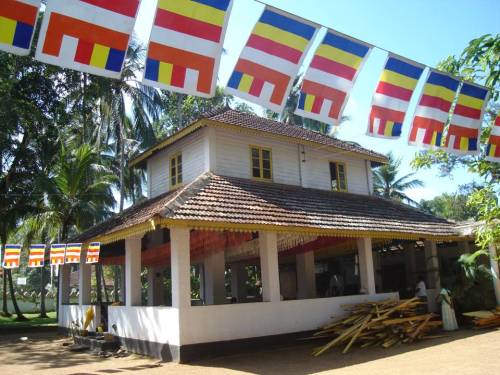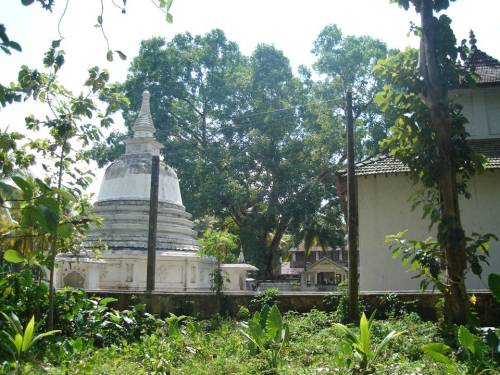
Opposition leader and the leader of the United National Party celebrates his 59th birthday today.
Hon Ranil Shriyan Wickramasinghe MP LLB (born March 24, 1949) was Prime Minister twice, from May 7, 1993 to August 19, 1994 and from December 9, 2001 to April 6, 2004. He has also been the leader of the United National Party since November, 1994 and a member of the party since the early 1970s.
Antecedents
Wickramasinghe’s father was Esmond Wickramasinghe, an ex-Samasamajist and supremo of the Lake House group of newspapers. His paternal uncle Lakshman Wickramasinghe was later to be a much respected Bishop of the Church of Sri Lanka. His maternal line consisted of newspaper barons and landowners, the Wijewardenas, who were Sinhala Buddhists. His maternal grandfather was D.R. Wijewardena, the founder of the Lake House publishing empire.
Education
Wickramasinghe was educated at Royal College, Colombo where he was a classmate and a good friend of Anura Bandaranaike, son of then Prime Minister Solomon Bandaranaike and Dinesh Gunawardena, son of socialist leader Philip Gunawardena. In spite of his inheritance, Wickramasinghe chose to pursue his higher education in his own country, entering the Faculty of Law at the University of Colombo. After graduation he completed the law exams at the Sri Lanka Law College and took oaths as an attorney-at-law. Of all the Presidents and Prime Ministers of Sri Lanka, Wickramasinghe is the only person to graduate from a local university, the remainder either having degrees from foreign universities or no university education at all.
Political career
A successful lawyer, Wickramasinghe joined the United National Party (UNP) and progressed through its youth and bar ranks. Wickramasinghe was appointed as the chief organizer of the Kelaniya Parliamentary seat in the mid 1970s but was later installed as the chief organizer of the Biyagama seat which he won in the 1977 Parliamentary Elections.
He was installed as the Deputy Minister of Foreign Affairs in the new government and was soon promoted to the post of Minister of Youth Affairs and Employment which made him the youngest cabinet minister of Sri Lankan history to date, during is term he created the Sri Lanka National Guard. He introduced the National Youth Services Council (NYSCO) which provides vocational and career training to thousands of school leavers. Wickramasinghe was later made the Minister of Education. As the education minister, he could made a visible positive difference in the standards of education and could build an image as an achiever. Wickramasinghe was also behind distributing television sets to thousands of remote schools in Sri Lanka.
Under the Presidency of Ranasinghe Premadasa, Wickramasinghe was appointed as the Minister of Industry and Leader of the House under which he initiated the Industrial reforms and established the Biyagama Special Economic Zone. Wickramasinghe had competition from his intellectual colleagues Lalith Athulathmudali and Gamini Dissanayake, who had been rivals of President Premadasa. However, he outmaneuvered both of them and many others and accordingly he was appointed the leader of house in 1989. On May 7, 1993 Wickramasinghe was sworn in as Prime Minister after President Ranasinghe Premadasa was assassinated, by the Tamil Tigers.
In the 1994 Parliamentary Elections, the UNP lost to Chandrika Bandaranaike Kumaratunga’s People’s Alliance (PA) which ousted Wickramasinghe from the Prime Ministership. He also lost the race to be the Opposition Leader by 2 votes to fellow UNP member Gamini Dissanayake who just re-joined the party. This gave Gamini Dissanayake the default leadership of the party and made him the Presidential nominee of the UNP. The UNP was showing great spirit and strength under Gamini Dissanayake, when he too was assassinated by the Tamil Tigers. Gamini Dissanayake’s widowed wife Srima became the replacement candidate of the UNP and secured only 35% of the vote, losing to Chandrika Kumaratunga in all the Parliamentary seats in Sri Lanka apart from Mahiyangana. Afterwards Wickramasinghe was appointed as the Opposition Leader as well as the UNP leader.
As Opposition Leader Wickramasinghe undertook his party through a difficult time period where the UNP supported many of the good deeds of the government despite some members of his party asking him to be more aggressive. In 1999 President Kumaratunga called the Presidential Elections a year prior to its expiration in the hope of regaining and fortifying power in order to amend the constitution. Wickramasinghe was nominated as the UNP candidate.
After a tense election campaign in the wake of the violent North Western Provincial Council election, President Kumaratunga was attacked by the Tamil Tigers in an attempt on her life in which she lost her right eye. In the election held 2 days later (December 21, 1999), amidst a wave of sympathy, Chandrika Kumaratunga received 51% of the total votes to be re-elected for her second and final term.
In 2001 Sri Lanka underwent severe losses in the warfront and only managed a highly unsatisfactory -1% economic growth rate, the first ever negative growth in the country’s history. By the end of the year a some members of the PA government led by S. B. Dissanayake a senior Minister of the PA government, and Deputy Finance Minister Prof. G. L. Peiris left the PA to join the UNP thus destabilising the Parliamentary composition which led Kumaratunga to call for fresh elections. The United National Front (UNF), formed with the PA dissidents, the Sri lanka Muslim Congress and the Ceylon Workers’ Congress assumed power in the 2001 Parliamentary Elections held on December 10. Wickramasinghe’s UNP won all but 6 of the 22 Electoral Districts in Sri Lanka. Thus Ranil Wickramasinghe took oaths as the Prime Minister of Sri Lanka for the second time.
One of his first acts was to sign a ceasefire agreement with the LTTE rebels and start peace talks. This has resulted in a visible development of the country. The civil war came to a halt; the North and South of the island was linked after decades and millions of people benefited as a result. During Wickramasinghe’s second term he also re-energized the economy to reach an economic growth rate of 6% and managed to keep the inflation down, at 2% – the country’s lowest. His liberal economic policies stabilized the national economy. He also developed many international ties setup by him during his time in the Opposition. Sri Lanka underwent huge social changes during this period due to the ceasefire which made the country much accessible and open.
Wickramasinghe came under fiery criticism after a police officer, commonly perceived as a Wickramasinghe ally, exposed an elite Sri Lankan army LRRP unit, based in Colombo who were engaged in covert operations against the LTTE, on the accusation that the unit was deployed to assassinate Wickramasinghe. However, most of the information about this event is baseless and were created by the political opponents of Wickremesinghe, mainly the extremist JVP. During the Presidential Election campaign of 2005 Wickramasinghe addressed most of these concerns and proved these accusations were not correct.
By November 2003 the LTTE showed willingness to reenter the peace talks by proposing an Interim Self Governing Authority (ISGA), which was seen by some as a blueprint for peace. President Kumaratunga quickly shook off these proposals and assumed the Defense, Interior, and Media Ministries – which cut short the powers of the UNP regime. Soon the President Kumaratunga’s PA allied with radical socialists Janatha Vimukthi Peramuna to form the United People’s Freedom Alliance (UPFA) and dissolved Parliament to call for new elections.
In the 2004 Parliamentary Elections held on April 02 Ranil Wickramasinghe’s UNF lost governmental office. The popular image of the UPFA candidate and his unrealistic but attractive promises like promising a 70% wage raise, tearing apart of the ceasefire agreement, lowering of the cost of living, employing the unemployed and reinstating the fertilizer subsidy. This left Wickramasinghe and his party a lot to think about and within such a small time they rebuilt the grassroots of the party and strengthened its position as the largest political party of Sri Lanka. Within 14 months of the assumption to power of the UPFA the radical JVP wing left the government destabilizing the government which has over 30 Parliamentarians short of the required majority.
In December 2004 Wickramasinghe was chosen by the United National Party as its Presidential candidate for 2005 Presidential Elections due in late 2005. The Supreme Court decided in August 2005 that the elections should be held this year despite the President’s argument that her term ends in 2006. Mahinda Rajapaksa, then Prime Minister, was appointed as the Presidential candidate of the Sri Lanka Freedom Party.
In the Presidential Election, held on November 17, 2005, Wickramasinghe was defeated narrowly by Mahinda Rajapaksa the Prime Minister at the time gaining 50.29% of the vote, while Wickramasinghe gained 48.43%. A majority of the minority Tamil population in the Northern and Eastern parts of the country who were largely expected to back Wickramasinghe were prevented from voting by the LTTE, who called for a boycott of the polls.












